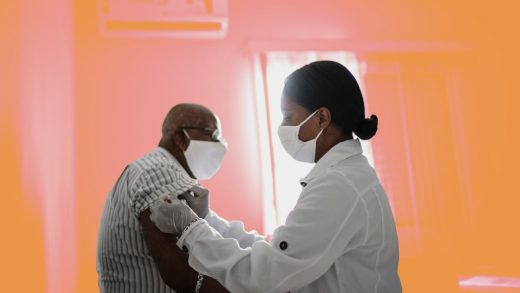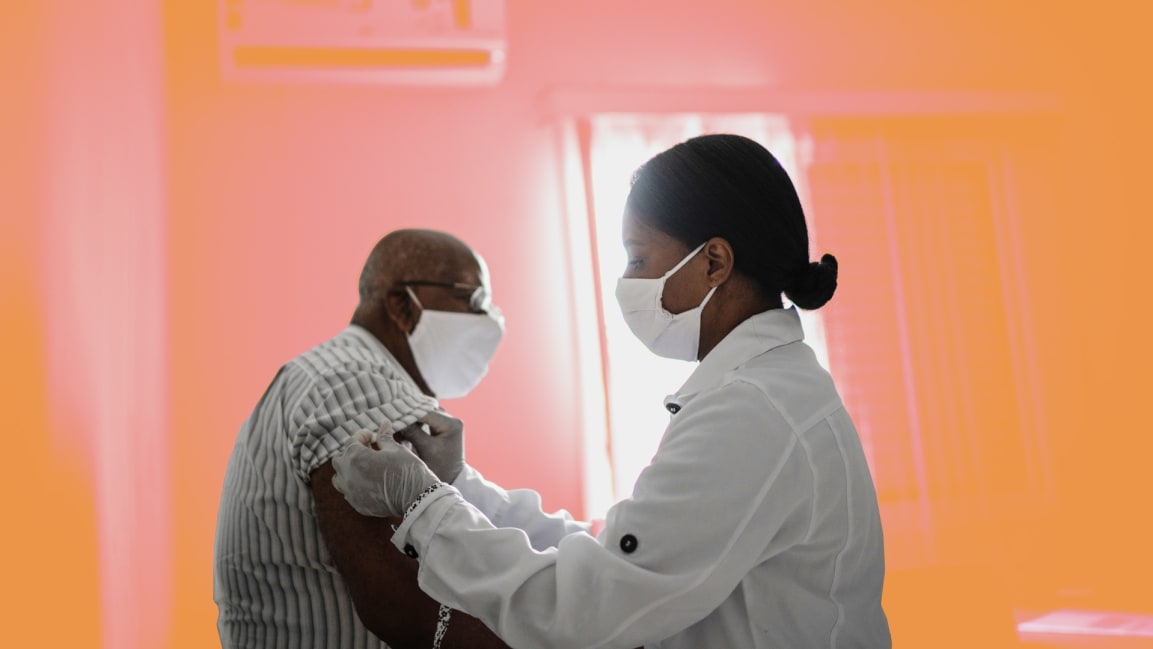3 ways to build an equitable health system, according to a Black doctor
While experts believe racial segregation may have contributed to Black Americans contracting the 1918 Flu at lower rates than white Americans, Black patients were more likely to die from the flu if they did become ill compared to white patients. Beyond the pandemic, Black Americans were suffering from higher rates of illness and death compared to white people. Reports in 1900 assert that Black communities were experiencing a 69% higher death rate from a number of diseases, such as tuberculosis and pneumonia, compared to white people.
And now, more than 100 years later, Black Americans are disproportionately impacted by COVID-19, dying at 2.4 times the rate of white Americans. In several states across the country, the difference in mortality is shocking. For instance, in Chicago, it has been reported that Black people account for nearly 60% of COVID-19 deaths while only making up 30% of the population. Several major cities across the country have the same disproportionate trend.
In 1918, Black people were often disbarred from care, leading to local and decentralized efforts to provide care within the community. We see these same disparities today. Poverty, redlining, poorer housing conditions, unequal access to quality physicians, and jobs that don’t allow individuals to work from home all create greater health risks for Black Americans, resulting in higher rates of acquiring COVID-19 and subsequently poorer outcomes.
The fact that these barriers to quality healthcare for Black Americans still exist over 100 years after the 1918 Flu makes it even more apparent that policymakers, physicians, payers, and healthcare innovators must come together in a unified commitment to democratize a great healthcare experience. While there is significant work ahead, there are several opportunities to take steps toward building a more equitable system.
Foster trusted relationships between Black patients and trust healthcare professionals
First, let’s focus on rebuilding and maintaining trust—an essential ingredient when it comes to improving access and equity in healthcare. We should acknowledge and find ways to atone for the egregious violations from unethical healthcare and scientific practices from our past, such as the Tuskegee Syphilis Experiment.
Black patients are also more likely to experience racial bias that undermines their outcomes, regardless of their socio-economic status. We see this even with elite members of society like Serena Williams, Dr. Susan Moore, and countless others. The cumulative effects of historical racist structural policies and ongoing discriminatory practices have led to Black patients’ deep mistrust of the healthcare system. We see this mistrust manifest today in COVID-19 vaccine hesitancy.
To foster trust over time, we need to cultivate better relationships between doctors and patients. We need a more culturally competent delivery system that caters to everyone, meeting patients where they are instead of expecting them to adapt.
There needs to be ongoing touchpoints and communication, not just when patients are not feeling well, but also when they feel great, so we can focus on preventative care needs. When you have a strong relationship with a patient and they can trust you for any ongoing care need, you become their guide through the healthcare system. The added convenience of digital healthcare makes these relationships much easier to establish and maintain.
We also need to proactively improve diversity, equity, and inclusion across all fronts in healthcare. For instance, while women make up a third of the physician workforce, Black physicians make up just 5% and Black women are a meager 2%. Representation matters and can help alleviate some of the distresses Black people experience when they encounter the healthcare system.
Address the impact of social determinants of health
Second, we must move “social determinants of health” (SDOH) from industry jargon to everyday healthcare. This concept refers to the idea that where you live, work, play, and pray impact health outcomes. Unfortunately, in some cases, societal barriers like redlining have resulted in more challenging living conditions, food deserts, and areas with limited green space for minorities, including Black Americans. If we’ve built trusted relationships with patients, physicians will be better equipped to provide a more holistic care plan that addresses the SDOH and connects people with community-level social supports, like transportation, housing, and food security.
As a physician, I see the benefits of holistic care every day. For example, if I have a long-term, trusted relationship with a patient, I might know that the patient has been experiencing poorly controlled blood sugar levels due to limited options for quality nutritious food in their neighborhood. The plan that I create will take this into account and help the patient make the best nutritional choices based on what they have access to.
Expand access to Telehealth for Black communities
Finally, we should identify opportunities to increase telehealth usage in Black communities. Telehealth is a pivotal tool to break down barriers to quality care, especially for those who might not have access to primary care providers in their communities, adequate transportation to appointments, or simply the time to take off work to travel to a doctor’s office. But the pandemic has further highlighted the concerns about equal access to virtual healthcare and further widened the divide as vulnerable populations have not adapted to telehealth.
While we’ve seen a rapid rise in demand for telehealth due to COVID-19, research shows that telehealth usage is lower amongst minority communities. A recent study by the Journal of the American Medical Informatics Association found that Black patients were 4.3 times more likely to use the emergency department over telehealth than their white peers during the height of the pandemic, mirroring pre-pandemic utilization. We need to bridge this digital divide. We must ensure Black communities and economically disadvantaged groups have access to telehealth services, which can help reduce expensive and often preventable emergency room visits.
It is also well established that households that are low-income, are Black or Latinx, or are in rural areas disproportionately lack access to broadband that enables effective utilization of telehealth. To expand access to telehealth, policymakers should start by making the temporary policies that expanded telehealth access during the COVID-19 pandemic permanent. As a country, we also need to work to close the digital divide and equip our vulnerable communities with the devices and broadband needed to connect with doctors when and where they want.
Recognizing the hard truth that the healthcare inequities of the past continue to exist today can be an invaluable step towards creating a brighter future. These are just a few approaches to help close gaps in care for the Black community. I’m optimistic about the potential of telehealth improving access to quality healthcare, and hopefully will improve healthcare outcomes for patients regardless of their race or zip code.
Dr. Evelyn Darius, is a board certified Family Physician with PlushCare, the nation’s largest virtual primary care group. Dr. Darius is a graduate of Indiana University School of Medicine where she was inducted into their chapter of the National Gold Humanism Honor Society.
(25)



